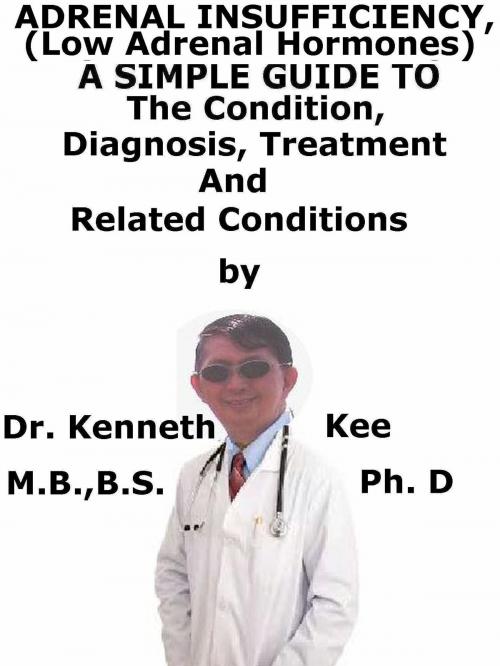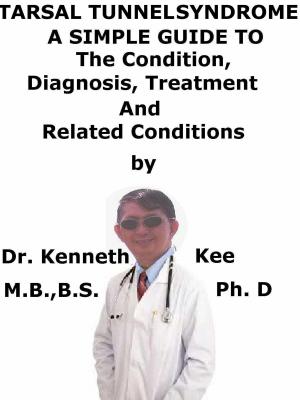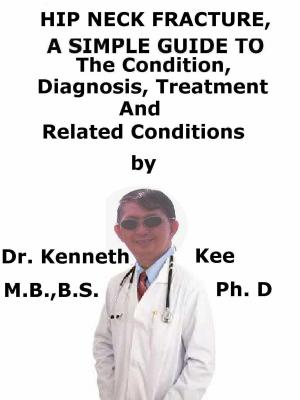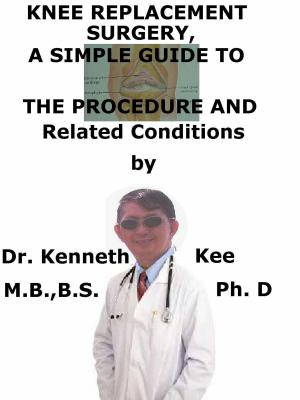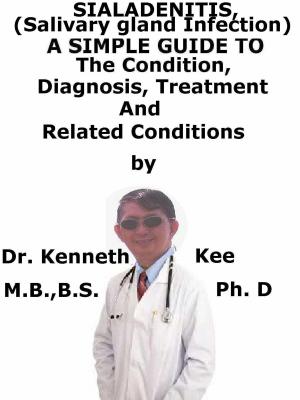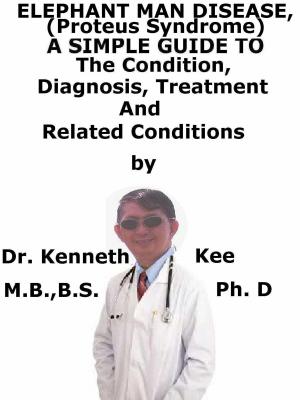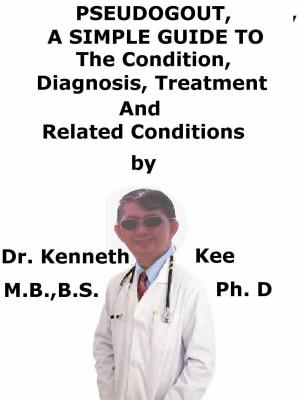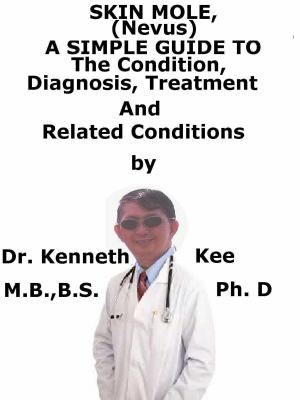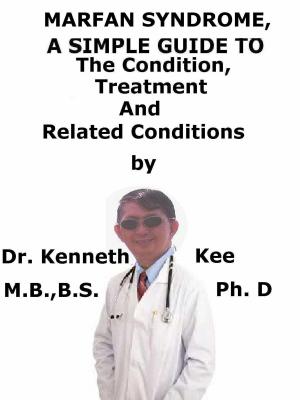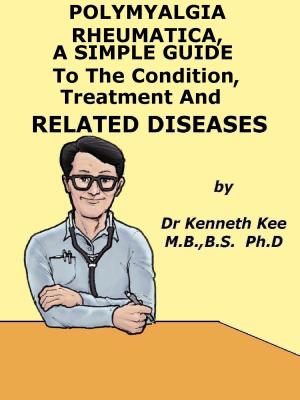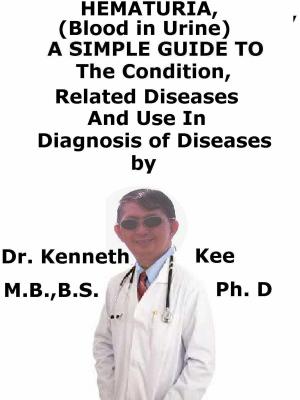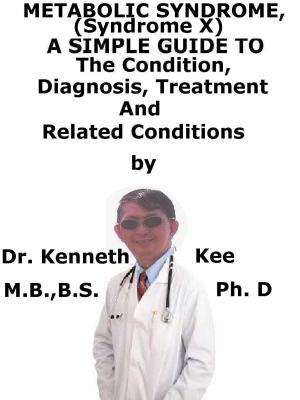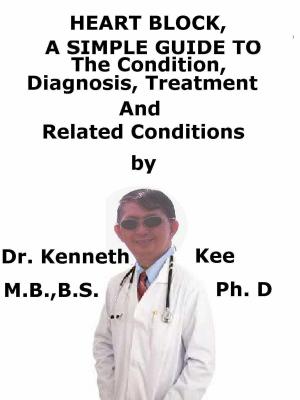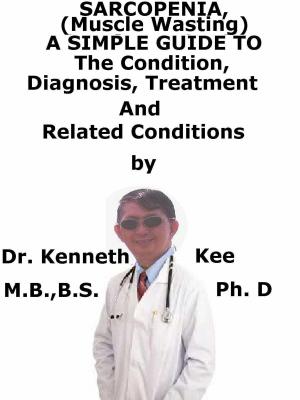Adrenal Insufficiency, (Low Adrenal Hormones) A Simple Guide To The Condition, Diagnosis, Treatment And Related Conditions
Nonfiction, Health & Well Being, Medical, Specialties, Internal Medicine, Endocrinology & Metabolism| Author: | Kenneth Kee | ISBN: | 9781370765423 |
| Publisher: | Kenneth Kee | Publication: | August 8, 2017 |
| Imprint: | Smashwords Edition | Language: | English |
| Author: | Kenneth Kee |
| ISBN: | 9781370765423 |
| Publisher: | Kenneth Kee |
| Publication: | August 8, 2017 |
| Imprint: | Smashwords Edition |
| Language: | English |
Adrenal Insufficiency (Addison Disease) is a disease that is caused by the deficiency of circulating glucocorticosteroids and mineral corticoids (aldosterone) hormones as a result of disease of the adrenal glands.
Adrenal Insufficiency is a disorder in which the patient does not make enough cortisol and other hormones in the adrenal glands.
Different symptoms form if the cortisol value reaches too low a level.
A extremely low cortisol level can be threatening to life.
Causes:
1. Auto-immune disease (Type 1 PGA – Poly-glandular Autoimmune Syndrome) of the adrenals with destruction of the adrenal parenchyma is associated with circulating antibodies and decreased production of glucocorticosteroids.
2. Tuberculosis of the adrenal glands especially in developing countries
3. Adrenal tumors that may be benign or malignant can reduce production of corticosteroids.
4. Cancers of other parts of the body, which can spread and destroy the adrenals.
Symptoms:
In many cases the symptoms develop gradually over weeks or months
A person may feel tired and not right but it is difficult to say why.
Also most of the symptoms can be caused by other problems and Adrenal Insufficiency is rare.
So the condition may not be recognized for weeks or months after symptoms first begin.
1. General weakness and becoming easily tired.
2. Darkened areas of skin (pigmentation).
a. Sun-exposed areas of skin;
b. The armpits;
c. The nipples;
d. The creases of the hands;
e. Inside the mouth;
f. Recent scars and
g. Pressure points such as the elbows.
The reason for this is possibly because of the change in hormones which can involve the pigment cells in the skin.
3. Blood pressure which is low and falls further when a person stands which can make him or her dizzy.
4. Being off the food and weight loss.
5. Feeling sick and vomiting from time to time.
6. Abdominal pains which may come and go.
7. Diarrhea or constipation which may come and go.
8. Cramps and pains in muscles.
9. Craving for salt or salty foods and drinks.
10. Menstrual periods in women may become irregular or stop.
In Addison crisis symptoms are:
a. Severe vomiting and diarrhea,
b. Pains in the back and abdomen,
c. Dehydration,
d. Low blood pressure,
e. Collapse.
Diagnosis:
A one-off measurement of blood cortisol is not good enough to diagnose Adrenal Insufficiency.
ACTH stimulation test is normally needed to confirm the diagnosis.
Plasma cortisol is low (< 3mcg/dL) and do not rise with ACTH stimulation.
Other signs are hyperpigmentation and loss of weight.
Chest and abdominal X-rays are done to test for tuberculosis
Treatment:
1. Cortisol replacement
The person needs steroid medication to replace the cortisol which he or she no longer makes.
This is normally with a medicine called hydrocortisone which is very similar to cortisol.
The amount is normally about 15-30 mg each day.
2. Replacing aldosterone
Fludrocortisone is a substitute medicine for aldosterone.
This helps to regulate blood pressure and blood salt level.
3. Addison crisis is treated by intravenous normal saline and hydrocortisone 100mg every eight hours
In patients in acute adrenal crisis, IV access should be done urgently, and an infusion of isotonic sodium chloride solution
should be started to replace volume deficit and correct hypotension.
Some patients may need glucose supplements.
Parenteral steroid coverage should be given in times of major stress, trauma, or surgery and during any major procedure.
During surgical procedures, 100 mg of hydrocortisone should be given, preferably by the IM route, before the start of a continuous IV infusion
The normal daily hydrocortisone replacement dose should be titrated.
TABLE OF CONTENT
Introduction
Chapter 1 Adrenal Insufficiency
Chapter 2 Causes
Chapter 3 Symptoms
Chapter 4 Diagnosis
Chapter 5 Treatment
Chapter 6 Prognosis
Chapter 7 Cushing Syndrome
Chapter 8 Adrenal Fatigue
Epilogue
Adrenal Insufficiency (Addison Disease) is a disease that is caused by the deficiency of circulating glucocorticosteroids and mineral corticoids (aldosterone) hormones as a result of disease of the adrenal glands.
Adrenal Insufficiency is a disorder in which the patient does not make enough cortisol and other hormones in the adrenal glands.
Different symptoms form if the cortisol value reaches too low a level.
A extremely low cortisol level can be threatening to life.
Causes:
1. Auto-immune disease (Type 1 PGA – Poly-glandular Autoimmune Syndrome) of the adrenals with destruction of the adrenal parenchyma is associated with circulating antibodies and decreased production of glucocorticosteroids.
2. Tuberculosis of the adrenal glands especially in developing countries
3. Adrenal tumors that may be benign or malignant can reduce production of corticosteroids.
4. Cancers of other parts of the body, which can spread and destroy the adrenals.
Symptoms:
In many cases the symptoms develop gradually over weeks or months
A person may feel tired and not right but it is difficult to say why.
Also most of the symptoms can be caused by other problems and Adrenal Insufficiency is rare.
So the condition may not be recognized for weeks or months after symptoms first begin.
1. General weakness and becoming easily tired.
2. Darkened areas of skin (pigmentation).
a. Sun-exposed areas of skin;
b. The armpits;
c. The nipples;
d. The creases of the hands;
e. Inside the mouth;
f. Recent scars and
g. Pressure points such as the elbows.
The reason for this is possibly because of the change in hormones which can involve the pigment cells in the skin.
3. Blood pressure which is low and falls further when a person stands which can make him or her dizzy.
4. Being off the food and weight loss.
5. Feeling sick and vomiting from time to time.
6. Abdominal pains which may come and go.
7. Diarrhea or constipation which may come and go.
8. Cramps and pains in muscles.
9. Craving for salt or salty foods and drinks.
10. Menstrual periods in women may become irregular or stop.
In Addison crisis symptoms are:
a. Severe vomiting and diarrhea,
b. Pains in the back and abdomen,
c. Dehydration,
d. Low blood pressure,
e. Collapse.
Diagnosis:
A one-off measurement of blood cortisol is not good enough to diagnose Adrenal Insufficiency.
ACTH stimulation test is normally needed to confirm the diagnosis.
Plasma cortisol is low (< 3mcg/dL) and do not rise with ACTH stimulation.
Other signs are hyperpigmentation and loss of weight.
Chest and abdominal X-rays are done to test for tuberculosis
Treatment:
1. Cortisol replacement
The person needs steroid medication to replace the cortisol which he or she no longer makes.
This is normally with a medicine called hydrocortisone which is very similar to cortisol.
The amount is normally about 15-30 mg each day.
2. Replacing aldosterone
Fludrocortisone is a substitute medicine for aldosterone.
This helps to regulate blood pressure and blood salt level.
3. Addison crisis is treated by intravenous normal saline and hydrocortisone 100mg every eight hours
In patients in acute adrenal crisis, IV access should be done urgently, and an infusion of isotonic sodium chloride solution
should be started to replace volume deficit and correct hypotension.
Some patients may need glucose supplements.
Parenteral steroid coverage should be given in times of major stress, trauma, or surgery and during any major procedure.
During surgical procedures, 100 mg of hydrocortisone should be given, preferably by the IM route, before the start of a continuous IV infusion
The normal daily hydrocortisone replacement dose should be titrated.
TABLE OF CONTENT
Introduction
Chapter 1 Adrenal Insufficiency
Chapter 2 Causes
Chapter 3 Symptoms
Chapter 4 Diagnosis
Chapter 5 Treatment
Chapter 6 Prognosis
Chapter 7 Cushing Syndrome
Chapter 8 Adrenal Fatigue
Epilogue
